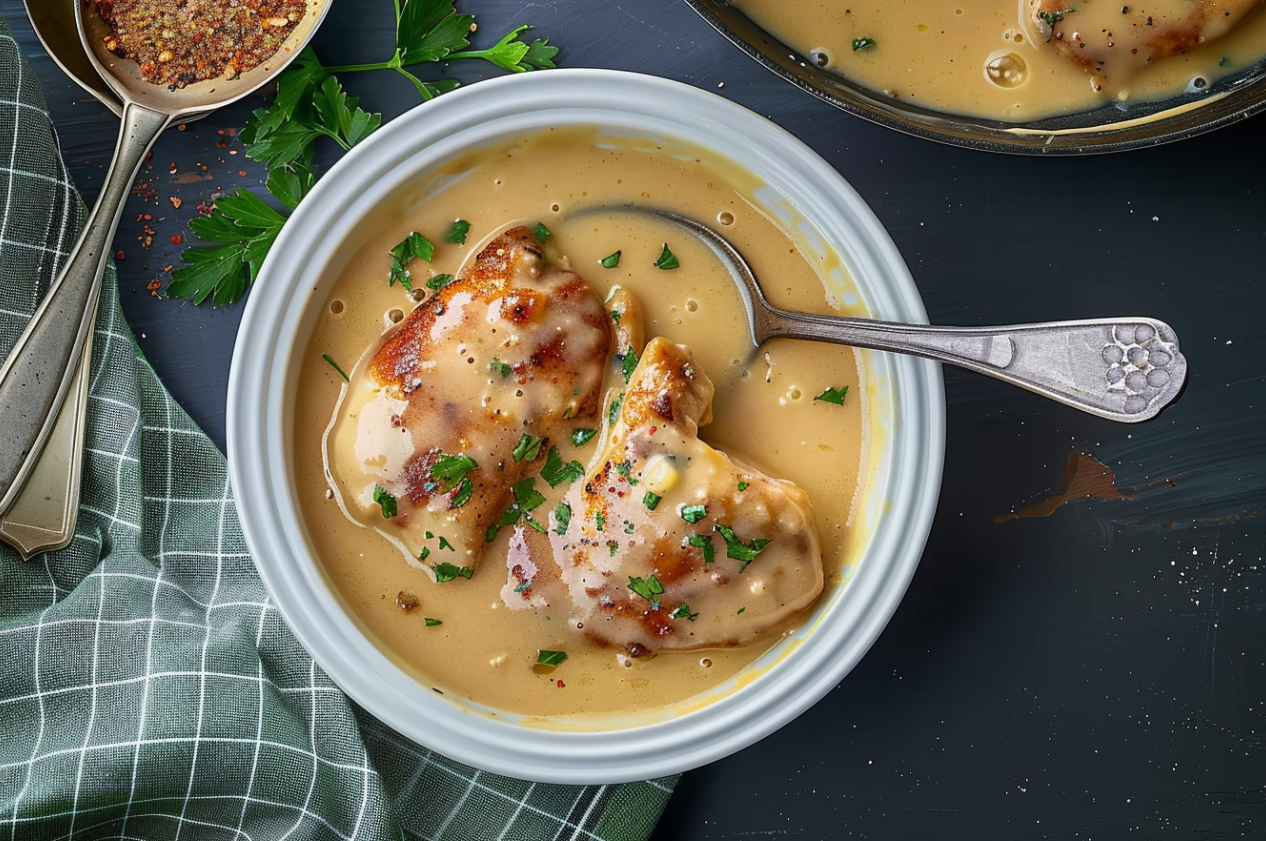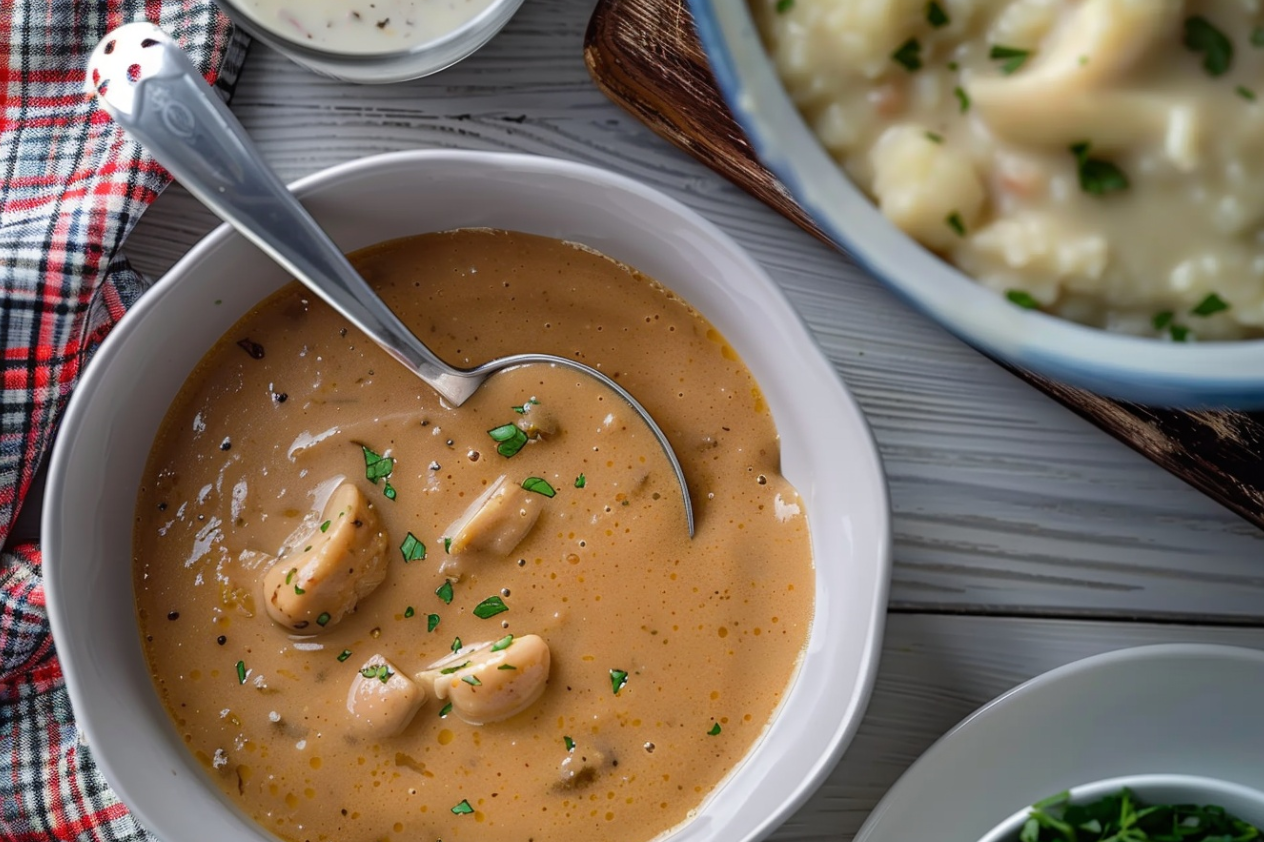Discovering the Comfort of Homemade Chicken and Gravy Recipe
The Universal Appeal of This Hearty Dish
Chicken and gravy Recipe holds a cherished spot in the heart of comfort cuisine across the globe. From the bustling kitchens of Southern America to the quaint countryside inns of England, this dish symbolizes warmth and family. Its universal appeal is rooted in its simplicity and the rich, savory flavors that come from perfectly cooked poultry and a smooth, velvety sauce.
Ingredients That Make the Magic Happen
A great chicken and gravy recipe starts with the basics: tender chicken, butter, flour, and stock. For those interested in enhancing the basic recipe, learning advanced techniques like Brining Techniques for Chicken can be incredibly beneficial. Brining the chicken ensures it remains juicy and succulent, perfect for a dish where texture is paramount.
Culinary Roots and Cultural Variations
Exploring the variations of chicken and gravy can be as exciting as traveling the world. Each region adds its own twist to the recipe, incorporating local herbs and spices, and sometimes even substituting the chicken for other proteins. This dish not only pleases the taste buds but also provides an enchanting look into various cultural traditions and culinary techniques.
The Basic Chicken Gravy Recipe
Print
Classic Chicken Gravy Recipe
- Total Time: 30 minutes
- Yield: 4 cups 1x
Description
This rich and creamy chicken gravy is perfect for enhancing the flavor of your dishes. It’s a simple yet delicious recipe that anyone can master.
Ingredients
- ½ cup unsalted butter
- ½ cup all-purpose flour
- 1 quart cold chicken stock, or more if needed
- ⅓ cup heavy cream
- Salt and ground white pepper to taste
- 1 pinch cayenne pepper
Instructions
- Melt the butter in a large saucepan over medium heat.
- Whisk in the flour until a smooth paste forms.
- Gradually add the cold chicken stock, whisking continuously to avoid lumps.
- Bring to a boil, then reduce the heat and simmer until thickened.
- Stir in the heavy cream, salt, white pepper, and cayenne pepper.
- Cook for another 2-3 minutes, adjusting the seasoning to taste.
Notes
For a deeper flavor, consider using homemade chicken stock. For tips on creating the perfect consistency, visit Perfect Gravy Guide.
- Prep Time: 10 minutes
- Cook Time: 20 minutes
- Category: Sauce
- Method: Stovetop
- Cuisine: American
Nutrition
- Serving Size: 1/2 cup
- Calories: 200
- Sugar: 0g
- Sodium: 150mg
- Fat: 18g
- Saturated Fat: 11g
- Unsaturated Fat: 7g
- Trans Fat: 0g
- Carbohydrates: 10g
- Fiber: 0g
- Protein: 2g
- Cholesterol: 45mg
Keywords: Chicken Gravy
Making chicken gravy from scratch ensures a healthier and tastier result compared to store-bought versions. The blend of butter and flour forms a silky base, while the chicken stock infuses depth. Incorporating heavy cream adds an extra layer of richness, making it an ideal complement to many meals. For those looking for variations, try exploring different regional recipes like Southern-Style Chicken Gravy.
STEPS
Step 1
Gather all ingredients.
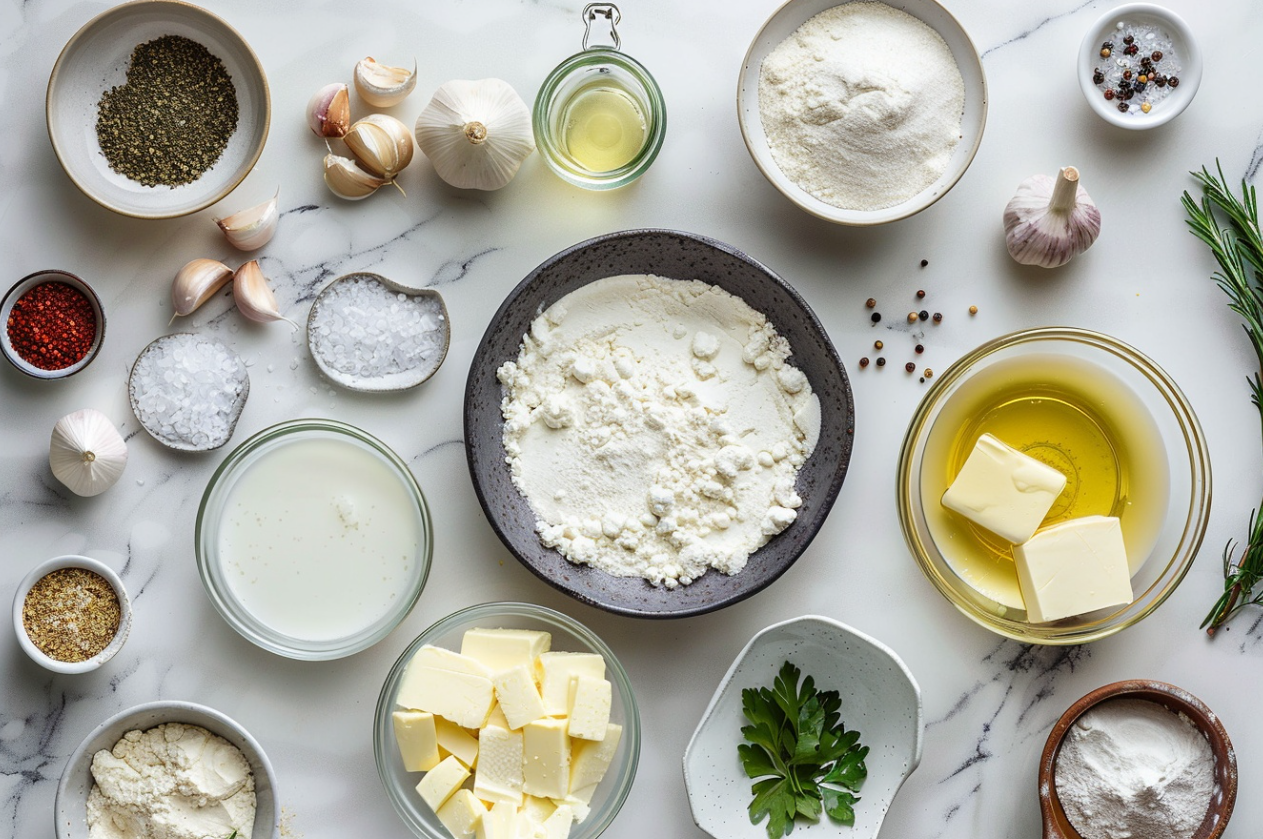
Step 2
In a saucepan over medium-low heat, melt the butter. Slowly whisk in the flour, then lower the heat and stir until the roux becomes golden and emits an aroma similar to baked pie crust, approximately 10 to 12 minutes.
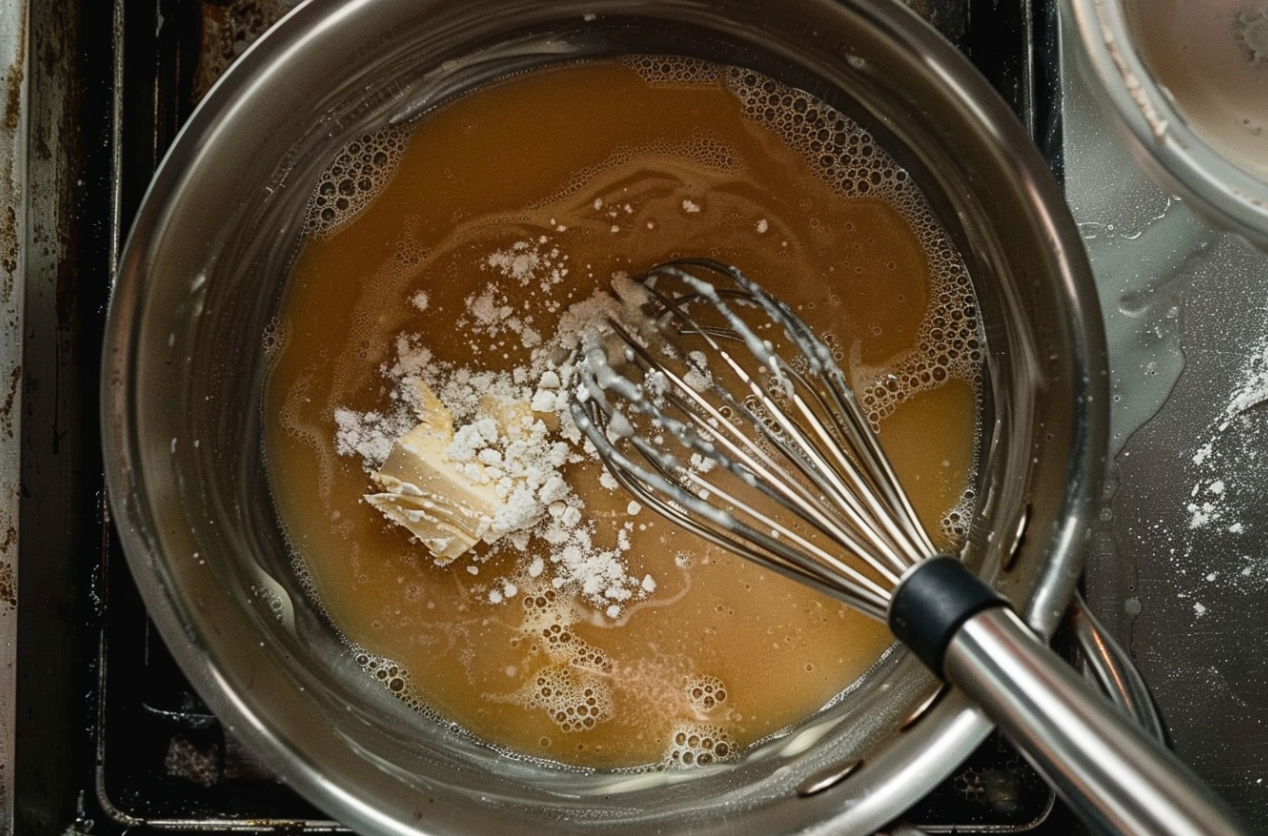
Step 3
Gradually whisk in around 2 cups of cold stock, bit by bit, ensuring any lumps are smoothed out. Then, pour in the remaining 2 cups of stock.

Step 4
Cook, stirring from time to time, until the gravy reaches a thickness that allows it to cling to the back of a spoon, about 10 to 15 minutes.
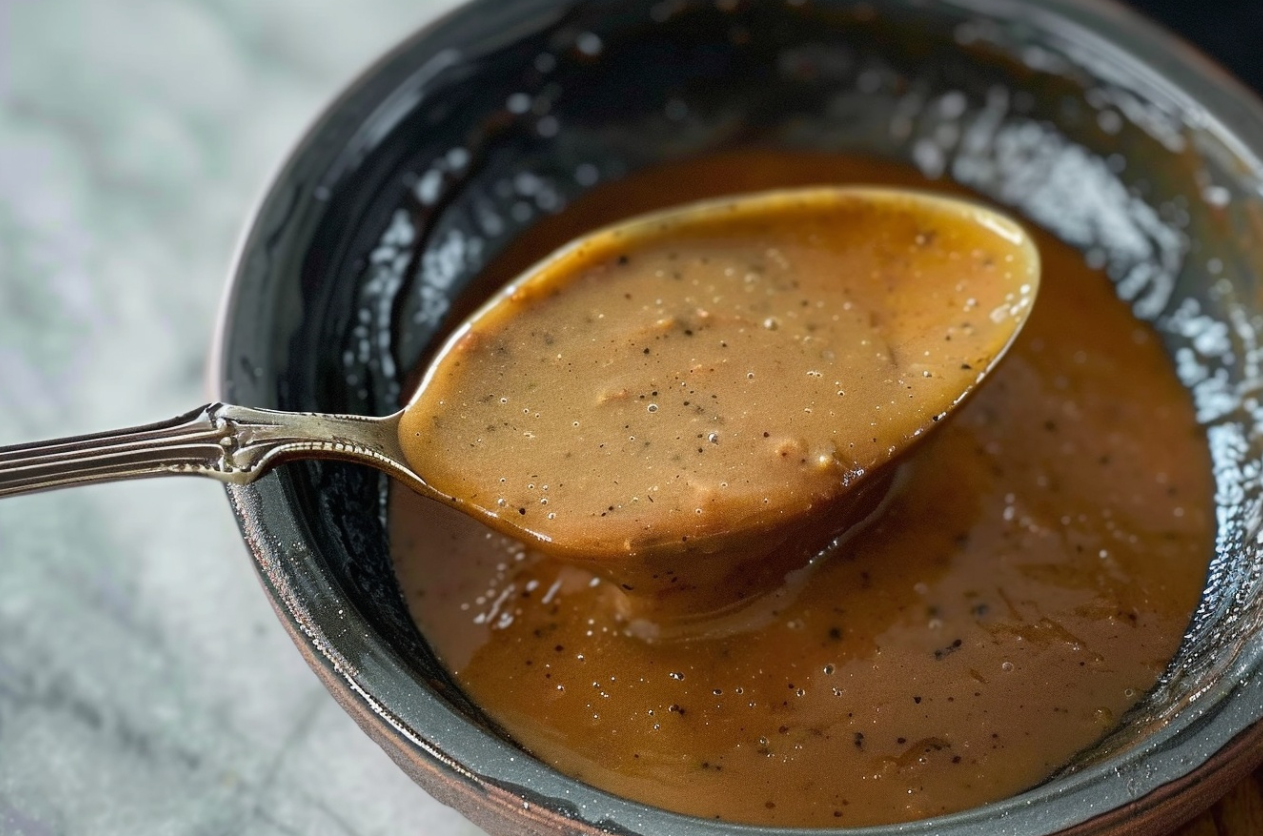
Step 5
Mix in the heavy cream, then season with salt, white pepper, and cayenne. Taste the gravy; if it still has a starchy flavor, let it simmer a bit longer, adding more cold stock as needed.
Step 6
Serve hot and enjoy!
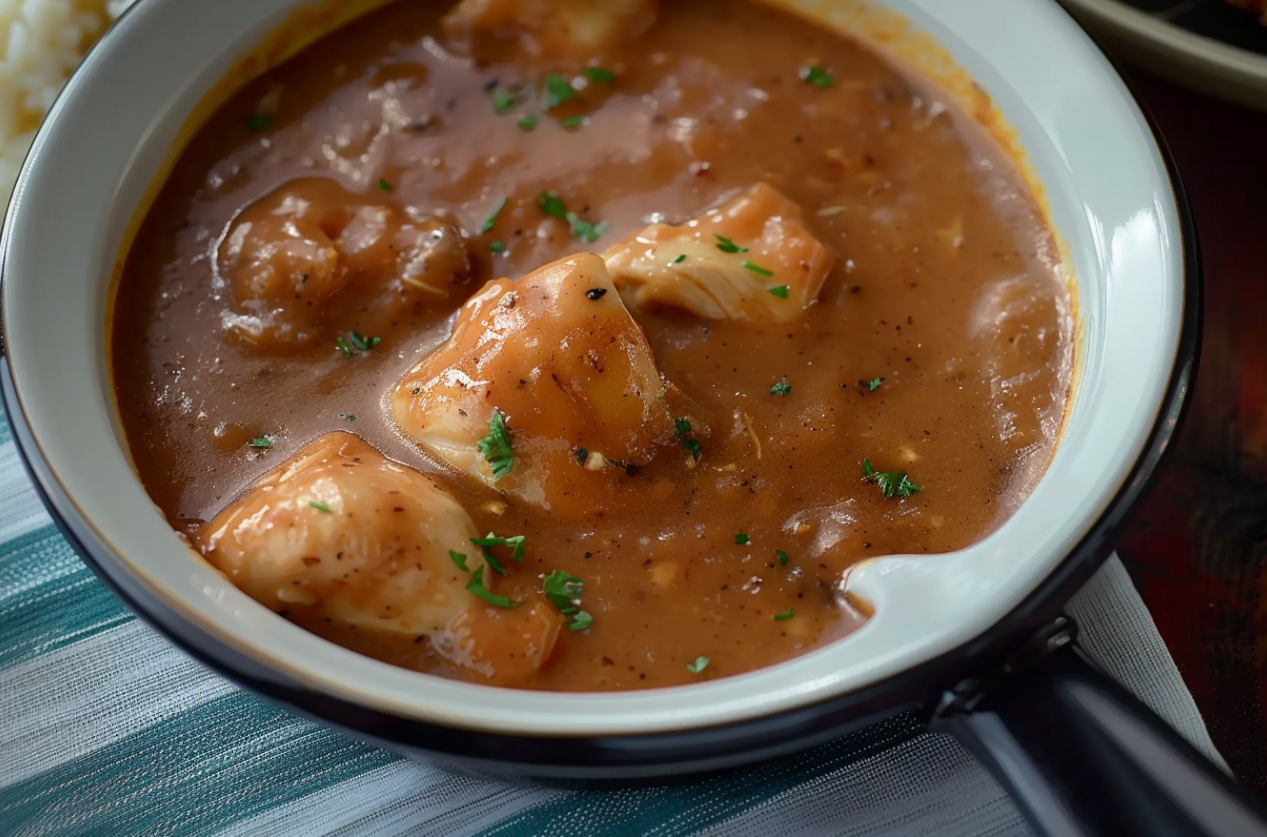
Mastering Advanced Techniques for Perfect Chicken and Gravy Recipe
Brining for Juiciness
The first step to exceptional chicken and gravy is ensuring the chicken is juicy and flavorful. Brining, which involves soaking the chicken in a saltwater solution, can greatly improve these qualities. Simply dissolve salt in water, add your chicken pieces, and let them sit in the brine for a few hours before cooking. This meticulous process ensures that the chicken retains its succulence, laying a delectable foundation for your velvety gravy.
Using a Roux for Thickening
A roux is essential for creating a rich and creamy gravy. Begin by coaxing butter into a pan, followed by a harmonious union with an equal measure of flour. Cook this mixture until it’s golden brown, stirring constantly. This not only thickens your gravy but also imparts a deeper flavor, which is crucial for a robust chicken and gravy.
Achieving the Perfect Simmer
Once your roux is ready and mixed with the chicken broth, bring your gravy to a gentle simmer. Allow the slow alchemy of cooking to weave its magic, coaxing flavors to meld harmoniously and the gravy to thicken organically, free from clumps. Keep the heat low and stir frequently to ensure that your gravy cooks evenly and acquires the perfect texture.
Layering Flavors
To elevate your dish, consider layering flavors by adding aromatic herbs like thyme or sage during the simmering process. A splash of white wine can also enrich the gravy’s flavor profile, adding a slight acidity that balances the richness.
Mastering these advanced techniques will transform your chicken and gravy from a simple dish to a gourmet meal that impresses with its depth of flavor and perfect texture. Whether you’re serving this for a family dinner or a special event, the outcome is sure to impress. For more advanced recipes, visit cookingwhite.
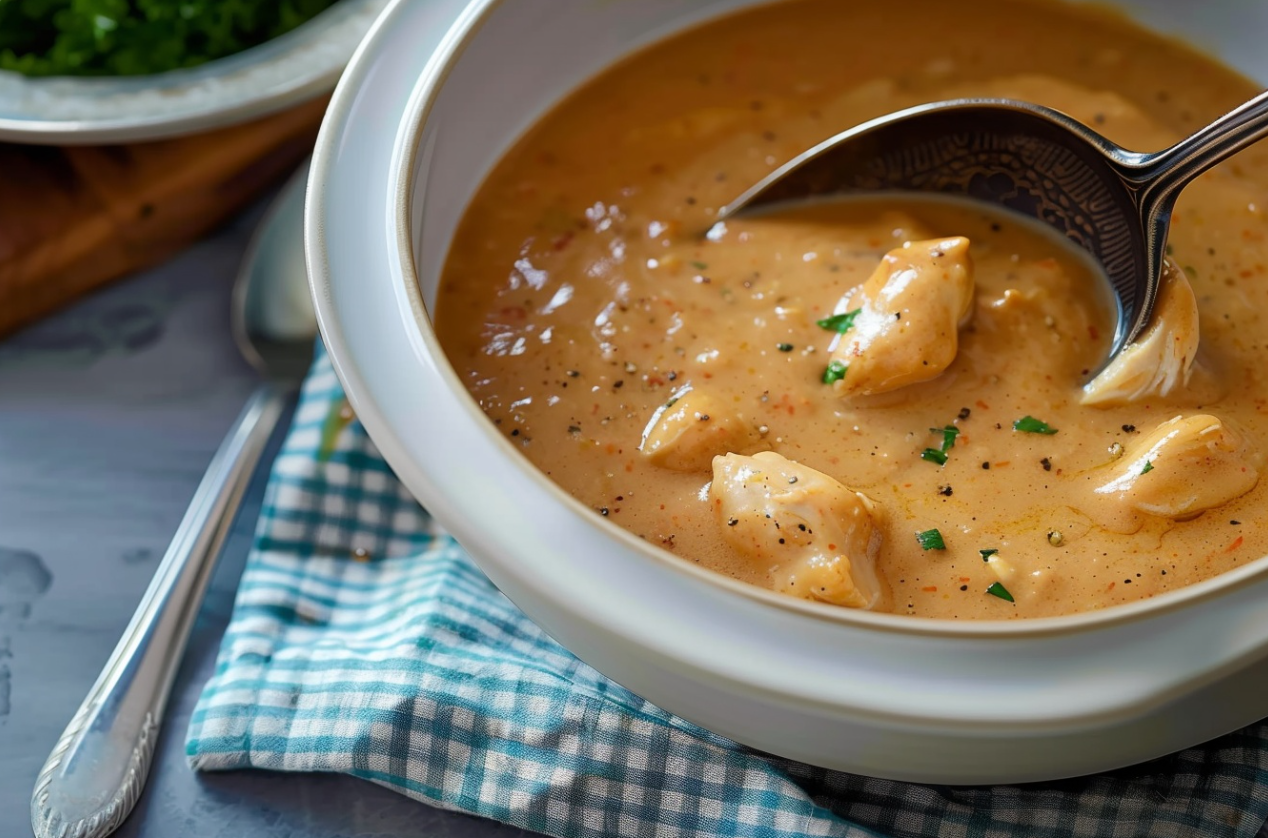
Best Practices for Storing and Reheating Chicken and Gravy Recipe
Storing Leftovers Safely
To ensure your chicken and gravy remains delicious and safe to eat, cool it quickly before refrigeration. Divide the leftovers into shallow containers to allow them to cool evenly and more rapidly. This technique stands as a stalwart guardian against the encroachment of bacterial adversaries, safeguarding the integrity of your culinary creation. Once the culinary symphony concludes, ensconce your creation in containers and bid it adieu in the embrace of refrigeration. Properly preserved, this gastronomic masterpiece shall endure for up to three days.
Reheating to Retain Flavor
When reheating, bring the gravy to a boil to ensure it is heated thoroughly, which helps to kill any potential bacteria. If the gravy has thickened too much in the fridge, you can thin it by adding a little water or chicken broth. Heat the chicken in the gravy to help maintain its moisture and flavor. Use a stove over medium heat for the best results, stirring frequently to ensure even heating.
For those seeking an extended sojourn
The icy embrace of freezing beckons as a savior, granting longevity to your chicken and gravy. Freeze in airtight containers or heavy-duty freezer bags to prevent freezer burn. Adorn each vessel with the mark of time, ensuring clarity in the chronicles of storage. Properly frozen, your dish can be kept for up to four months. When the hour of reheating draws nigh, thaw your creation gently in the sanctuary of the refrigerator overnight.
Quick Tips for Best Results
- Always use airtight containers to preserve the quality and prevent odors in the fridge.
- Reheat only once to maintain the best taste and food safety.
- If microwaving, cover the dish to avoid splattering and ensure even heating.
Following these tips, you can enjoy your chicken and gravy multiple times, each time as satisfying as when it was freshly made.

Adapting Chicken and Gravy for Various Dietary Needs
Gluten-Free Modifications
For those with gluten sensitivities, making chicken and gravy accessible requires a few simple swaps. For a gluten-free twist, swap traditional wheat flour for the enchanting allure of alternatives like rice flour or commercial gluten-free blends, ensuring a seamless thickening of your gravy. Tread cautiously, ensuring that all comrades in this culinary odyssey, including the chicken broth, bear the noble insignia of gluten-free certification. This small adjustment allows everyone to enjoy a comforting meal without health concerns.
Low-Fat Variations
Health-conscious individuals may prefer a low-fat version of chicken and gravy. Opt for skinless chicken breasts, which are lower in fat than thighs. Instead of using butter, try a light olive oil to make the roux, and use low-fat broth to cut down on calories without sacrificing flavor. These substitutions help maintain a rich taste while keeping the dish healthier.
Vegetarian Alternatives
Vegetarians can also savor the essence of traditional chicken and gravy by substituting chicken with plant-based alternatives like seitan or tofu. These protein sources nicely mimic the texture of chicken. For the gravy, use vegetable broth and, if desired, add umami-rich ingredients like mushrooms or soy sauce to deepen the flavor profile. Vegetarian Gravy Recipes.
Tailoring to Other Dietary Requirements
- Low-Sodium: Reduce salt and use low-sodium broth to cater to those monitoring their salt intake.
- Dairy-Free: Use plant-based butters or oils instead of traditional dairy products in the roux.
Adapting chicken and gravy to meet various dietary needs ensures that everyone at the table can enjoy this comforting dish. By making thoughtful ingredient choices, you can cater to dietary restrictions while still delivering a meal full of flavor and satisfaction.
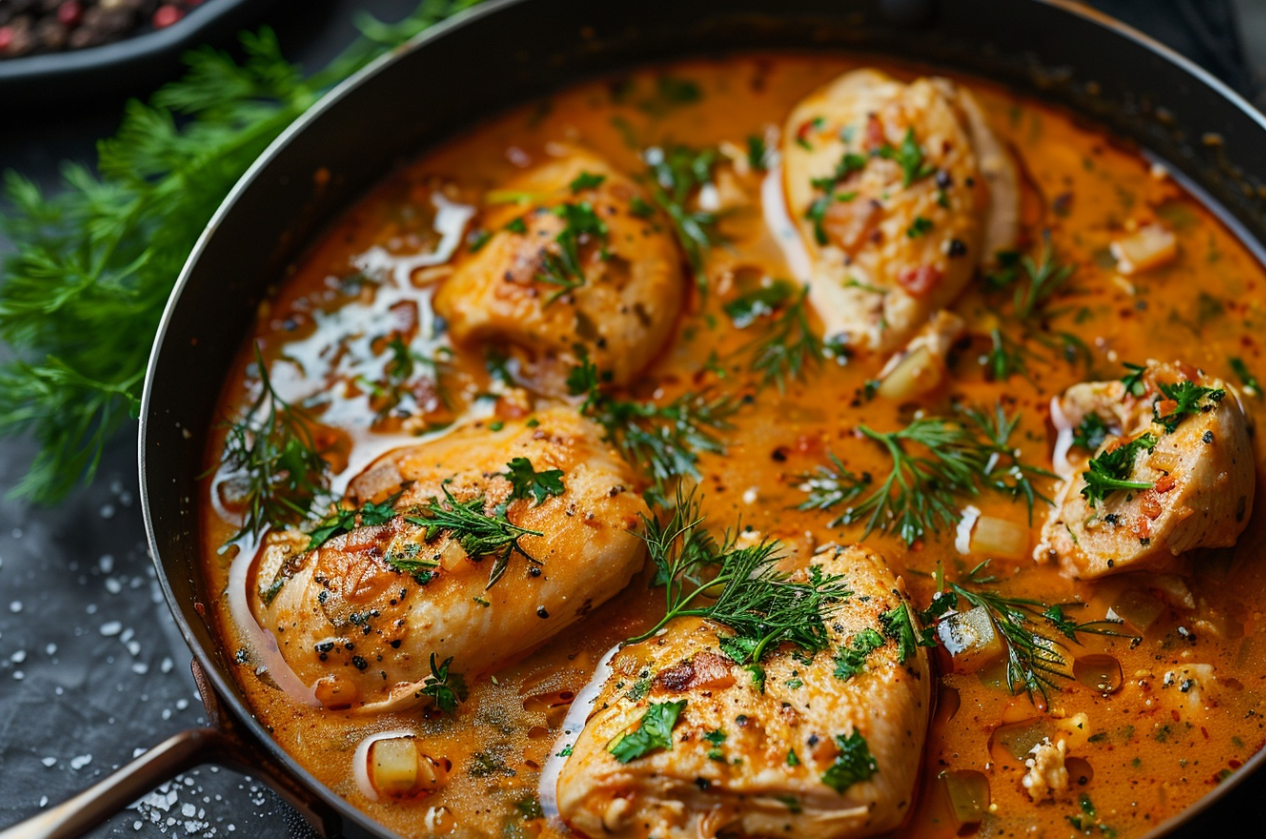
Frequently Asked Questions About Making Chicken and Gravy Recipe
How Do I Fix Runny Gravy?
If your chicken and gravy turns out too thin, a quick fix is to create a slurry. Unleash the power of cornstarch, mingling a tablespoon with an equal measure of frigid water, introducing this dynamic duo to the simmering gravy and witnessing its transformation into a velvety embrace. Let the alchemy continue, granting a few fleeting minutes for the gravy to thicken and reach its zenith of flavor. Remember, adding the slurry gradually allows you to control the consistency precisely.
What are the Top Chicken Cuts for Gravy?
For the juiciest results, thigh meat is superior due to its higher fat content, which renders into tender, flavorful pieces perfect for chicken and gravy. Breast meat, while leaner, can also be used, especially if brined beforehand to maintain moisture.
Can I Make Gravy Without Drippings?
Absolutely! While drippings add depth, you can create a delicious gravy by using butter as the base for your roux, then adding chicken broth. Elevate your creation with a symphony of seasonings, from the whisper of garlic powder to the allure of onion powder, all harmonizing with a splash of white wine to bestow complexity.
How to Make Gravy Thicker Without Flour?
For those avoiding flour, alternatives like arrowroot or tapioca starch are excellent thickeners. Harness the enigmatic power of arrowroot, adding it delicately towards the denouement of cooking to prevent its dissolution into the gravy.
Can chicken and gravy brave the icy depths of freezing?
Indeed, they can endure for up to four lunar cycles, provided they are ensconced in airtight containers and bid adieu to heat. Ensure a graceful descent into the icy embrace of storage, preserving quality for the journeys ahead. When the hour of resurrection approaches, thaw your creation tenderly in the sanctuary of the refrigerator before ushering it into the gentle warmth of reheating.
Addressing these common queries ensures your success in making chicken and gravy, enhancing your culinary skills and boosting your confidence in the kitchen.
